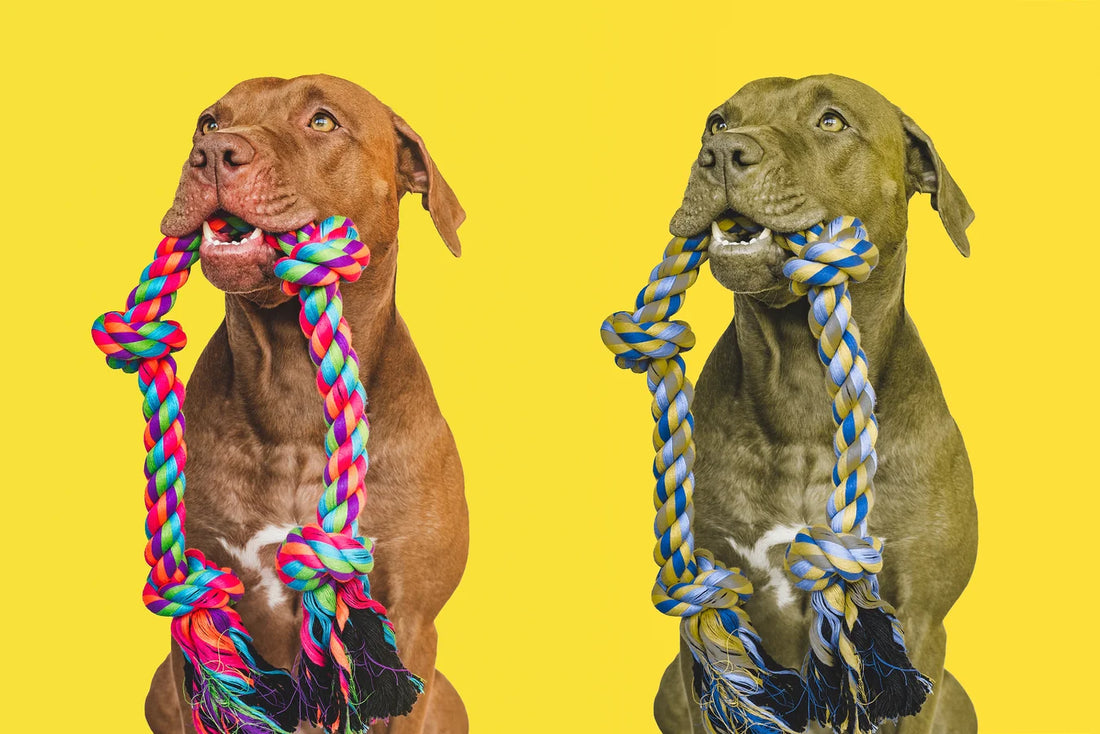
How Dogs See the World: A Fascinating Look Through Their Eyes
Share
Have you ever wondered how your dog perceives the world? While we share our lives with these loyal companions, their vision is quite different from ours. From colors to motion detection, dogs experience their surroundings in a unique way—and understanding their perspective can help us bond with them even better.
In this blog post, we’ll explore:
- How dog vision differs from human vision
- What colors dogs can (and can’t) see
- How their night vision and motion detection work
- Why their other senses compensate for visual limitations
- Fun ways to see the world from your dog’s point of view

Dog Vision vs. Human Vision: Key Differences
1. Color Perception – Not Just Black and White
Contrary to popular belief, dogs don’t see in pure black and white—but their color range is limited compared to humans.
- Humans: See a full spectrum of colors (trichromatic vision).
- Dogs: See mainly blues and yellows (dichromatic vision).
- Reds and greens appear as shades of gray or brown to them.
Why does this matter? If you throw a red ball on green grass, your dog might struggle to see it—but a blue or yellow toy will stand out!
2. Better Night Vision (But Less Detail)
Dogs have evolved as crepuscular hunters (most active at dawn and dusk), so their eyes are optimized for low light.
- More rod cells (help with dim light detection).
- Tapetum lucidum (a reflective layer in their eyes that enhances night vision—this is why their eyes "glow" in photos!).
- Trade-off: Their vision is blurrier than ours in daylight.
3. Superior Motion Detection
Dogs may not see fine details clearly, but they excel at detecting movement—even at a distance.
- Can spot a squirrel darting across the yard before you do!
- React faster to moving objects (great for fetch games).
4. Wider Peripheral Vision, But Less Sharpness
- Field of view: ~240 degrees (compared to humans’ 180 degrees).
- Less visual acuity: What we see clearly at 20 feet, a dog sees as clearly at about 6 feet.
How Dogs Experience the World Differently
Since dogs rely less on sharp vision and more on smell, hearing, and motion, their world is:
- More scent-driven – Their nose is 10,000 to 100,000 times more sensitive than ours!
- More attuned to movement – A still object might go unnoticed, but a slight twitch grabs their attention.
- Less focused on fine details – They recognize us more by smell and body language than facial features.
Fun Experiment: See Like a Dog!
Want to experience how your dog sees? Try this:
- Desaturate colors (turn down reds and greens in a photo filter).
- Slightly blur the image (to mimic their lower visual acuity).
- Focus on movement – Notice how moving objects stand out more than static ones.
How to Make Life Easier (and More Fun) for Your Dog’s Vision
Since dogs see differently, you can adapt their environment for better engagement:
✅ Choose blue or yellow toys (easier to spot).
✅ Use motion-based games (flirt poles, fetch, laser pointers).
✅ Avoid red/green items on similar-colored backgrounds (they might blend in).
✅ Keep night lights on (helps their natural low-light vision).
Final Thoughts
Dogs may not see the world in vivid detail like we do, but their vision is perfectly adapted for their needs—especially when combined with their incredible sense of smell and hearing. By understanding how they perceive their surroundings, we can create a more enriching and joyful life for them.
Did you know about your dog’s vision before? Share your thoughts in the comments! 🐶
Want more pet insights? Subscribe for tips on dog behavior, health, and fun bonding activities! 🛍️🐕